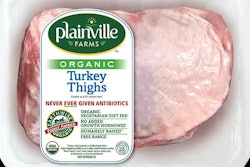Hatchery and breeder professionals recently gathered in Nashville, Tenn., for a two-day clinic, sponsored by USPOULTRY. The clinic’s speakers brought expertise from across the industry, including experienced veterinarians, hatchery managers and technical service directors, to discuss best practices and industry concerns in hatchery-breeder management.
Rita Harkless, director of FSQA Program Compliance for Perdue Farms, provided insight into animal welfare considerations to be made during the pullet phase and related enrichments to tangible benefits. Simply put, implementing enrichments that allow chickens to exhibit more “natural” behaviors can lead to improved results, not only in welfare, but in desired behaviors once in the breeder house. One example of this, she said, was that hens with enrichment experience in the pullet house were more inclined to jump onto slats when they arrive in the breeder house.
In her presentation on "Hatchery Management: Back to Basics", Ashley McGovern, hatchery manager for Pilgrim’s, spoke about “cracking the hatchery code” and adapting strategies to specific hatchery conditions. She acknowledged that “McGuyvering” solutions may work for a while, but not indefinitely. She also identified methods that savvy hatchery managers can use to strategically address any performance issues that arise.
Dr. Aline Kuntze Ferreira, incubation specialist for Aviagen, echoed some of the material in McGovern’s presentation, urging attendees to use or create conditions in the hatchery for the benefit of hatcher operation. She stressed that embryonic requirements remain unchanged in various climate zones, so consistently meeting those needs will require adaptation at different times of the year.
Chad Mason, breeder/hatchery manager for House of Raeford Farms, presented on fertility management and how to maximize performance. A key point of his presentation was that the objective of male management is to build the reproductive system without affecting maturation rates.

















